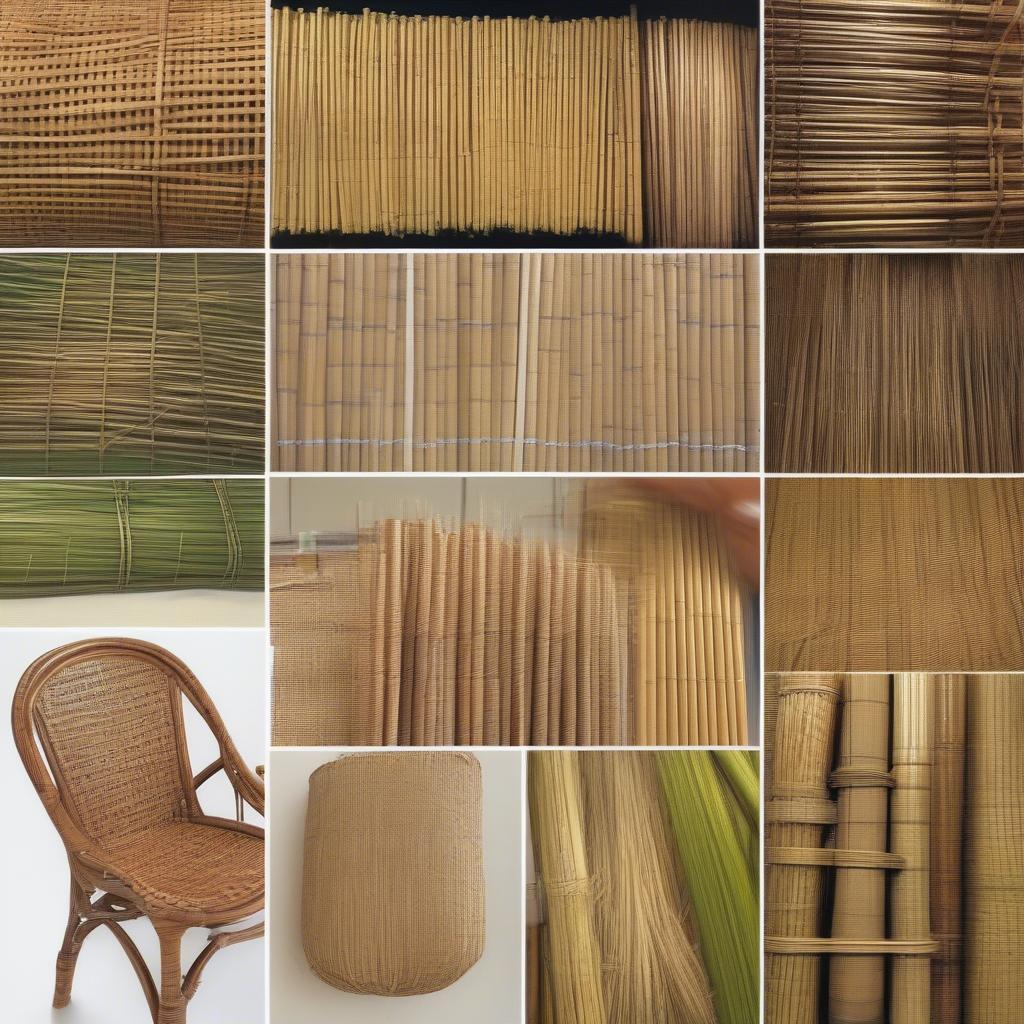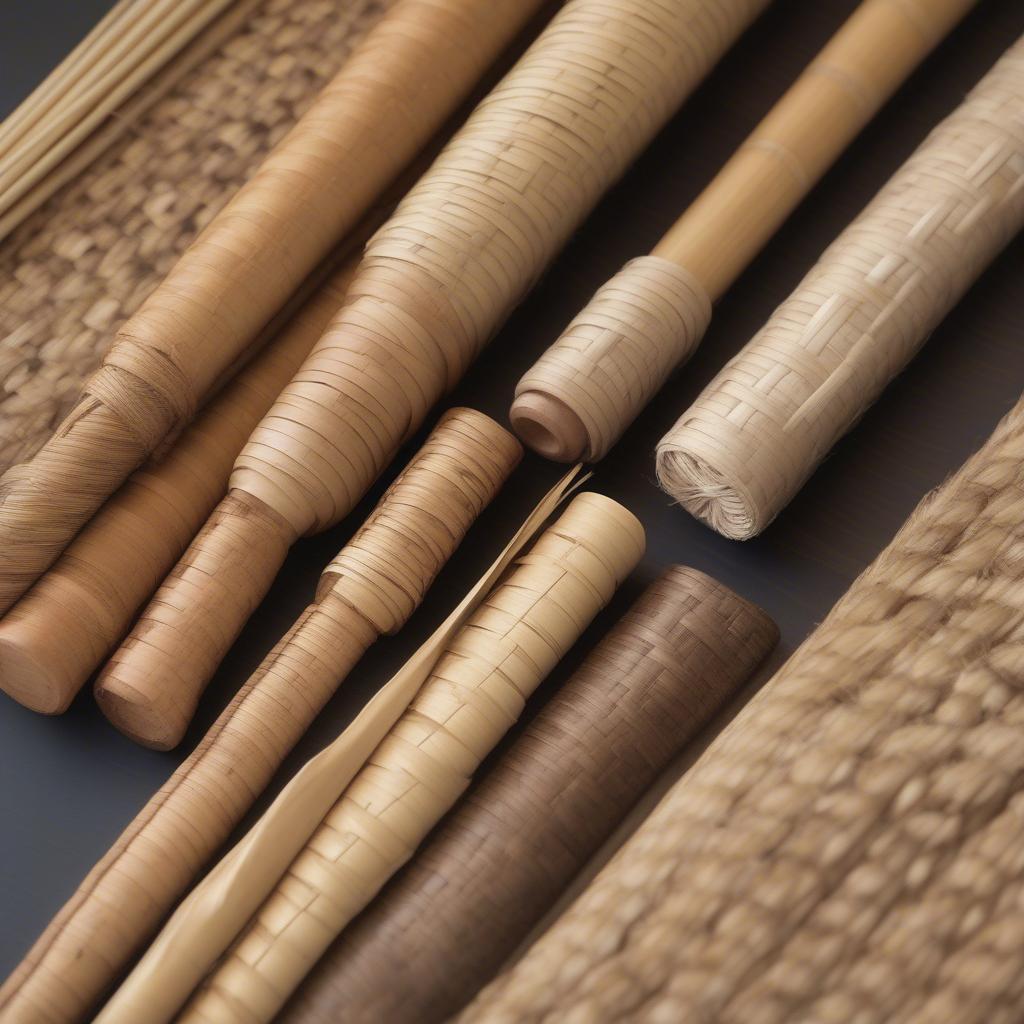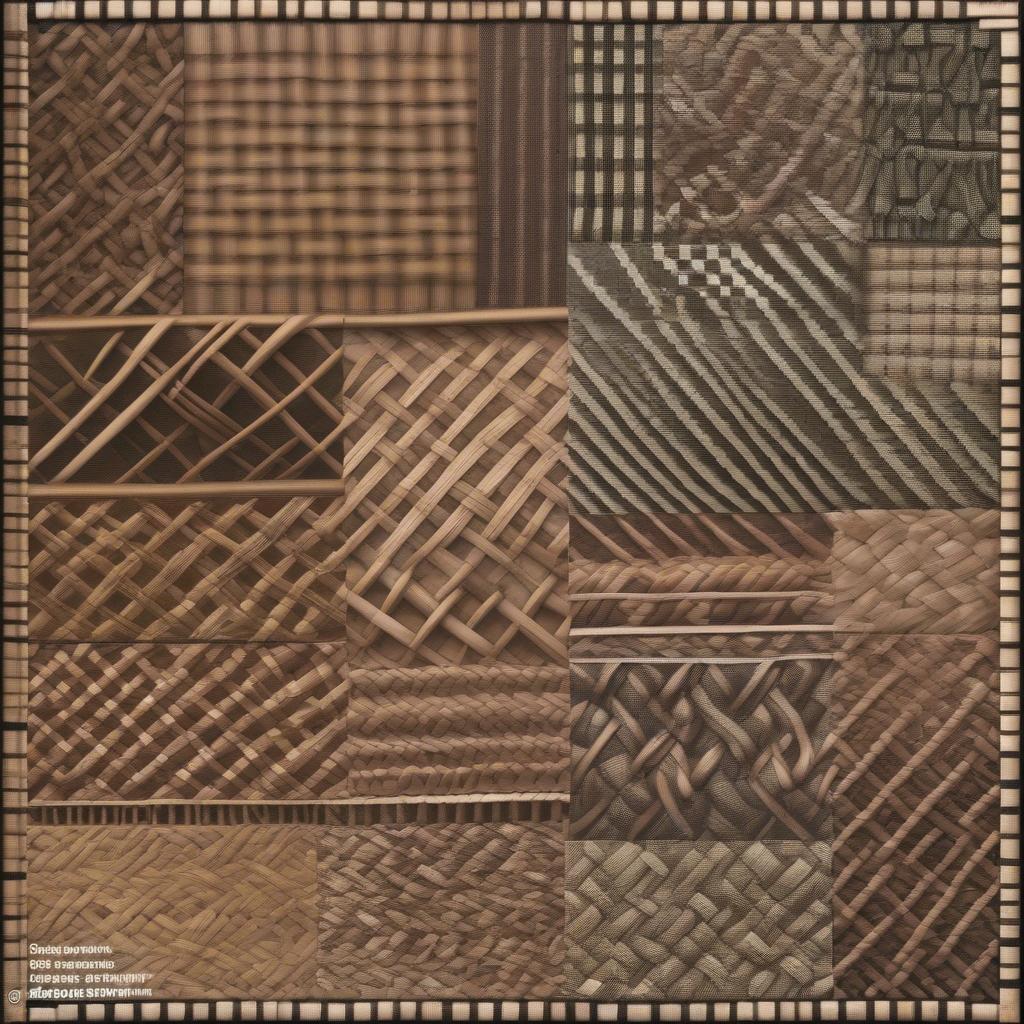Weave Chair
Choosing the Right Cane for Chair Weaving
Cane is a popular material for chair weaving, offering both durability and a classic aesthetic. Whether you’re a seasoned weaver or just starting out, understanding the different types of cane available is crucial for successful chair restoration or creation. Choosing the right Cane For Chair Weaving ensures a beautiful and long-lasting finish.
Choosing the right cane for your chair weaving project can feel overwhelming with so many options available. This guide will explore the various types of cane, their unique properties, and ideal applications, empowering you to make informed decisions for your next project. From understanding the differences between rattan and wicker to selecting the perfect size and style of cane, we’ll cover everything you need to know.
Understanding the Different Types of Cane for Chair Weaving
Cane isn’t a single material, but rather a category encompassing several varieties, each derived from different plants and offering unique characteristics. The most common types include:
-
Rattan Cane: Derived from the rattan palm, this type is known for its strength, flexibility, and smooth texture. It’s a popular choice for both traditional and contemporary chair designs.
-
Bamboo Cane: This sustainable option offers excellent strength and a distinct textured appearance, adding a unique visual element to woven furniture.
-
Paper Fiber Rush: A cost-effective alternative to natural cane, paper fiber rush is made from twisted paper and offers a smooth, uniform look. It’s less durable than natural cane but easier to work with for beginners.
-
Seagrass: A durable and naturally water-resistant material, seagrass adds a rustic and textured look to woven chairs. It’s often used for outdoor furniture due to its weather resistance.
 Different Types of Cane for Chair Weaving
Different Types of Cane for Chair Weaving
Selecting the Right Size and Style of Cane
Once you’ve chosen the type of cane, selecting the correct size and style is essential for achieving the desired look and structural integrity. Cane is typically sold in various widths and thicknesses, measured in millimeters. The size you need depends on the chair’s design and the weaving pattern you intend to use. Common sizes range from 1.5mm to 6mm, with 2.5mm and 3mm being popular choices for chair seats.
weaving chair seats with cane rush and splints
Beyond size, cane also comes in various styles, such as:
-
Flat Reed: This versatile option is used for a wide range of weaving patterns, from simple to complex.
-
Round Reed: Often preferred for its smooth texture and ease of use, round reed is a popular choice for creating intricate designs.
-
Pre-woven Cane Webbing: Ideal for beginners or those seeking a quicker weaving process, pre-woven cane webbing comes in sheets that can be easily attached to a chair frame.
 Cane Sizes and Styles for Chair Weaving
Cane Sizes and Styles for Chair Weaving
Preparing Cane for Weaving
Before you begin weaving, preparing the cane properly is crucial for achieving a smooth and durable finish. Soaking the cane in warm water for a specific period, typically 15-30 minutes depending on the type, softens it and makes it more pliable, reducing the risk of breakage during the weaving process.
weaving a chair seat with binder cain
“Proper preparation is key to a successful cane weaving project,” says renowned furniture restorer, Amelia Carter. “Taking the time to soak and condition your cane will make the weaving process smoother and result in a more beautiful and long-lasting finish.”
Weaving Techniques and Patterns
Numerous weaving techniques and patterns can be used with cane, from simple checkerboard patterns to intricate hexagonal weaves. The technique you choose will depend on your skill level, the chair’s design, and the desired aesthetic.
“Experimenting with different weaving techniques allows you to create unique and personalized pieces,” adds Carter. “Don’t be afraid to try new patterns and explore your creativity.”
 Cane Weaving Patterns for Chairs
Cane Weaving Patterns for Chairs
Conclusion
Choosing the right cane for chair weaving is crucial for achieving both structural integrity and aesthetic appeal. By understanding the different types of cane available, their properties, and the various weaving techniques, you can create beautiful and durable pieces that will last for years to come. Selecting the correct cane size and style, along with proper preparation and weaving techniques, will ensure a successful and rewarding chair weaving experience. Remember to choose cane that complements the chair’s design and reflects your personal style.
FAQ
-
What is the most durable type of cane for chair weaving?
Rattan cane is generally considered the most durable option for chair weaving. -
How do I know what size cane to use?
The appropriate cane size depends on the chair’s design and the weaving pattern. -
How long should I soak cane before weaving?
Soaking times vary depending on the type of cane, typically between 15-30 minutes. -
What are some common cane weaving patterns?
Common patterns include checkerboard, herringbone, and hexagonal weaves. -
Where can I purchase cane for chair weaving?
Cane can be purchased from craft stores, online retailers, and specialty suppliers. -
Is cane weaving difficult to learn?
While it requires patience and practice, cane weaving is a skill that can be learned with dedication. -
What tools do I need for cane weaving? chair cane weaving tool
When you need assistance, please contact our Hotline: +84 388 951 999, address: Hanoi, Vietnam or Tech Avenue, Suite 12, San Francisco, CA 94105, USA. We have a 24/7 customer service team.
